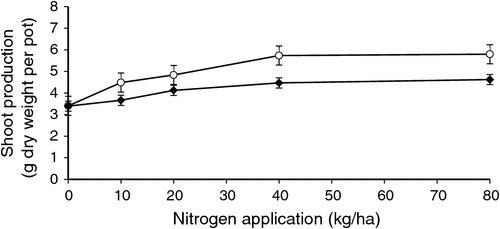Assessing the suitability of microalgae biomass produced from piggery waste as a fertiliser
S. N. Jenkins A C , C. A. Paredes-Valdivia A , I. S. Waite A , J. Ayre B , N. Moheimani B , L. Barton A and L. K. Abbott AA The University of Western Australia, Crawley, WA 6009.
B Murdoch University, Murdoch, WA 6150.
C Corresponding author. Email: sasha.jenkins@uwa.edu.au
Animal Production Science 57(12) 2480-2480 https://doi.org/10.1071/ANv57n12Ab051
Published: 20 November 2017
The use of microalgae for the recapture of nutrients, water and bioenergy from the treatment of piggery effluent is a promising technology (Astals et al. 2015; Nwoba et al. 2016). The harvested microalgae biomass has the potential to be developed into a high quality, concentrated and balanced fertiliser due to its high nitrogen (N) and phosphorous (P) content that is easy to handle and transport (Mulbry et al. 2005). However, there is still uncertainty regarding the re-use of microalgae in terms of its impact on plant N uptake, dry matter production, N mineralisation, and soil microbial activity. The aims of this study were 2-fold: (1) to investigate the effectiveness of microalgae biomass to supply N to wheat in comparison with a synthetic N fertiliser, ammonium nitrate (NH4NO3), and (2) to assess the release of inorganic N (potential N mineralisation rate) following the application of microalgae biomass to soil. Microalgae biomass grown on undiluted, untreated piggery anaerobic digestion effluent was obtained from the Algae R&D Centre, Murdoch University. First, a pot experiment having a 2 × 5 factorial arrangement of treatments was undertaken to test the feasibility of using microalgae as a fertiliser with factors being two N sources (microalgae biomass and NH4NO3) applied at five N equivalent levels (0, 10, 20, 40, 80 kg N/ha) for 8 weeks. The trial was planted with wheat (Triticum aestivum L.) and arranged in randomised block design with four replicates per treatment. Second, a laboratory incubation experiment was conducted to quantify the potential N mineralisation of the microalgae using the same experimental design for the pot trial but without the plant. Total dry biomass, root and shoot production were determined using standard methods. Soil mineral N was analysed colourimetrically using a modified hydrazine reduction method. The carbon dioxide (CO2) production (microbial activity) was measured using an infrared gas analyser.
Utilisation of the microalgae biomass as an alternative fertiliser significantly improved the overall wheat yield and shoot production (Fig. 1), particularly at higher application rates. However, shoot production was slightly lower in the plants receiving the microalgae when compared to the mineral fertiliser NH4NO3. The soil N mineralisation rate was positively correlated with the amount of microalgae biomass applied implying that the microalgae provides an available nitrogen source for plants but not to the same extent as NH4NO3. This is because a large proportion of the N in microalgae is in an organic form and needs to be mineralised by soil microorganisms before it is plant available. Consequently, an increase in microbial activities (CO2 production) was observed in the soil amended with the microalgae biomass. Further studies to determine the agronomic and economic value of microalgae as a fertiliser are needed.

|
References
Astals S, Musenze RS, Bai X, Tannock S, Tait S, Pratt S, Jensen PD (2015) Bioresource Technology 181, 97–104.| Crossref | GoogleScholarGoogle Scholar |
Mulbry W, Westhead EK, Pizarro C, Sikora L (2005) Bioresource Technology 96, 451–458.
| Crossref | GoogleScholarGoogle Scholar |
Nwoba EG, Ayre JM, Moheimani NR, Ubi BE, Ogbonna JC (2016) Algal Research 17, 268–276.
| Crossref | GoogleScholarGoogle Scholar |
Supported by Australian Pork Limited, Pork CRC Limited Australia and Department of Agriculture and Food, Western Australia.


